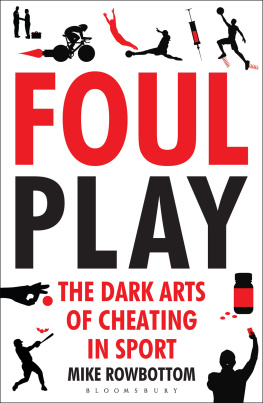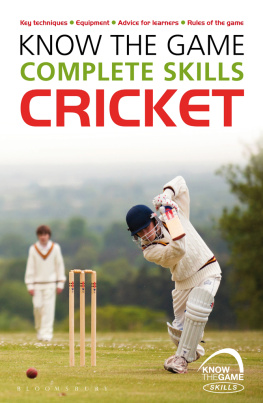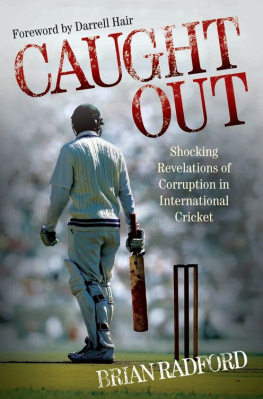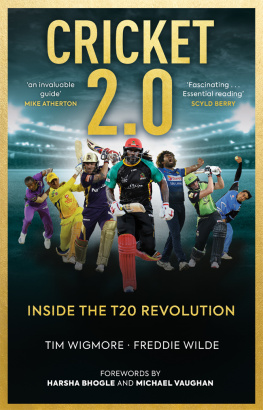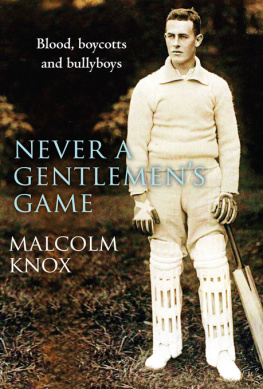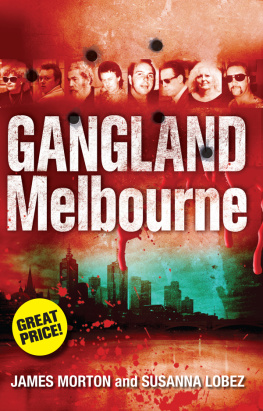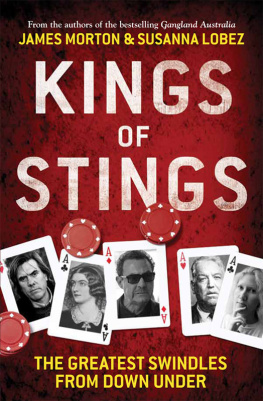GANGLAND
GANGLAND
THIS
UNSPORTING
LIFE
JAMES MORTON & SUSANNA LOBEZ

VICTORY BOOKS
An imprint of Melbourne University Publishing Limited
Level 1, 715 Swanston Street, Carlton, Victoria 3053, Australia
www.mup.com.au

First published 2019
Text James Morton and Susanna Lobez, 2019
Design and typography Melbourne University Publishing Limited, 2019
This book is copyright. Apart from any use permitted under the Copyright Act 1968 and subsequent amendments, no part may be reproduced, stored in a retrieval system or transmitted by any means or process whatsoever without the prior written permission of the publishers.
Every attempt has been made to locate the copyright holders for material quoted in this book. Any person or organisation that may have been overlooked or misattributed may contact the publisher.
Cover image of greyhounds: 1953, Sam Hood.
Dograces, Home and Away, Mitchell Library, State Library of New South Wales, courtesy copyright holder.
Text design and typesetting by Typeskill
Cover design by Nada Backovic Design
Printed in Australia by McPhersons Printing Group

9780522874808 (paperback)
9780522874815 (ebook)
Contents
Introduction
How does one begin? Begin at the beginning, said the King in Alice in Wonderland, gravely, and go on till you come to the end: then stop.
Unsporting practice in Australia started with the arrival of the First Fleet, but sadly there is no place at which it will stop.
The 2000 Sydney Olympics, although lauded as the best games ever by IOC head honcho Juan Antonio Samaranch, was not above the skullduggery. It would therefore seem to be an ideal place from which both to look back and to look forward.
Before the games were officially opened there were serious doubts about drug taking by athletes. It was feared it might become not a question of who was the fastest and strongest but whose drugs were the stronger and longer lasting. On the bright side, however, there was a great deal to anticipate, including the great American athlete Marion Jones announcement that she was going to do her best to win five golds in track and field events. It was a promise she seemingly fulfilled to great acclaim.
There were many successes. The Harbour Bridge was lit with thousands of light bulbs. Cathy Freemans all-white suit when she lit the Olympic flame was memorable, even if the equipment temporarily malfunctioned and she had to stand under a waterfall while it was reset. There were the mascots: Olly (short for Olympics), a kookaburra; Syd (for Sydney), a platypus; and Millie (for Millennium), a spiny anteater. Alas, and perhaps unsportingly, their roles were hijacked by the unauthorised and anarchic Fatso the Fat-Arsed Wombat.
A creation of Sydney cartoonist Paul Newell, along with Rampaging Roy Slaven and HG Nelson, the avatars of popular sports satirists John Doyle and Greig Pickhaver, Fatso was banned for a time after winners were seen carrying him after their events but was quickly reinstated after public outcry. Fatso was eventually auctioned off for over $80,000, bought by Kerry Stokes, now the Seven Network chairman, with the money going to a childrens charity. A statue of Fatso became part of the Olympic Memorial Park but sadly he was damaged in September 2010. The next month he vanished after the Grand Final.
But, so far as Australian athletes were concerned, things other than mascots had already started to go sour. Just before Australias discus thrower and medal hopeful Werner Reiterer took a drugs test he admitted, By the way, Im presently full of drugs. He was using eight banned substances, including anabolic steroids, human growth hormone and insulin-like growth factor. Unbelievably, when the test result came back a few days later Reiterer had a clean reading.
To his eternal credit, Reiterer ignored the test result and retired that spring. Later in 2000 he detailed in his autobiography Positive his drug use and explained why, as an athlete, he starting taking them:
I was training my guts out every day, exhausting myself, risking injury and being beaten again and again by guys I knew who were on drugs. Its the way a lot of us get involved [using drugs], seeing the cheats win, knowing they got away with it.
Not everyone behaved as well as Reiterer. For a start the whole of the Bulgarian weightlifting team was disqualified after it was found a significant number of members had been taking drugs. There was an offer that if a fine was paid the clean lifters could stay, but it was declined. In all, fifteen Olympians throughout the various sport disciplines were disqualified for taking drugs or later admitted they had done so.
Then there was the case of the female Chinese gymnast, a member of the bronze medal team. There were serious issues over the date of her birth and when it became clear she was fourteen, and not the minimum age of sixteen, the team gave up their medals.
Sixteen-year-old Romanian gymnast Andreea Rducan was also disqualified and stripped of the gold medal she won in the all-round gymnastics competition at the Sydney Olympics after she tested positive for pseudoephedrine. A stimulant that is the active ingredient in medicines such as Sudafed, it had been banned by the International Olympic Committee but not by the International Gymnastics Federation. Rducan received the pseudoephedrine in cold medication from a team doctor, who was subsequently suspended for the next two Olympic games. Earlier, Rducan had won gold in team gymnastics and silver in the vault. She had tested negative following those events and was allowed to keep the medals. Her 2015 appeal over the gold medal was dismissed.
In the short term, however, the best (or worst) was yet to come.
The Paralympic basketball tournament was won by Spain against Russia, but some journos thought that a number of the men, who had to have an IQ of less than seventy-five to qualify to play, could have played professional basketball in Australia. They were correct. Of the Spanish team, only two met the criteria and, of the others, one was a journalist, another an engineer and several had degrees. In their first game the team was so far ahead at half-time that they were told to ease up in the second half to avoid discovery.
Carlos Ribagorda, the playing journalist who blew the whistle, thought other members of the Spanish Paralympic team did not really qualify either. There had been no proper testing and a great deal of connivance by the authorities. He played in other Paralympic tournaments as well and thought a number of athletes from other countries were not really qualified to be paralympians. But he said nothing about it, saving his story for his post-Olympic special.
And as for Marion Jones? There had been allegations and whispers that had begun in the early 1990s when Jones had missed a random drugs test, saying she had never received the notifying letter. In 2008 she served a six-month prison sentence over her involvement in a cheque fraud scam and when she came out she still denied she had ever taken drugs, saying that all she had swallowed was flaxseed oil. In her 2004 autobiography, Marion Jones: Life in the Fast Lane, she partly blamed the 2002 breakup of her marriage to shot-putter CJ Hunter on the fact that Hunter had tested positive for steroids four times before the 2000 Olympics, tainting her own drug-free image. Then some years later came the admission by Jones that she and Tim Montgomery, the sprinter and the father of her first child, along with Hunter had all used drugs ironically known as The Clear prior to the Sydney Olympics. Montgomery later served a five-year sentence for dealing in heroin in 2008.
Next page

